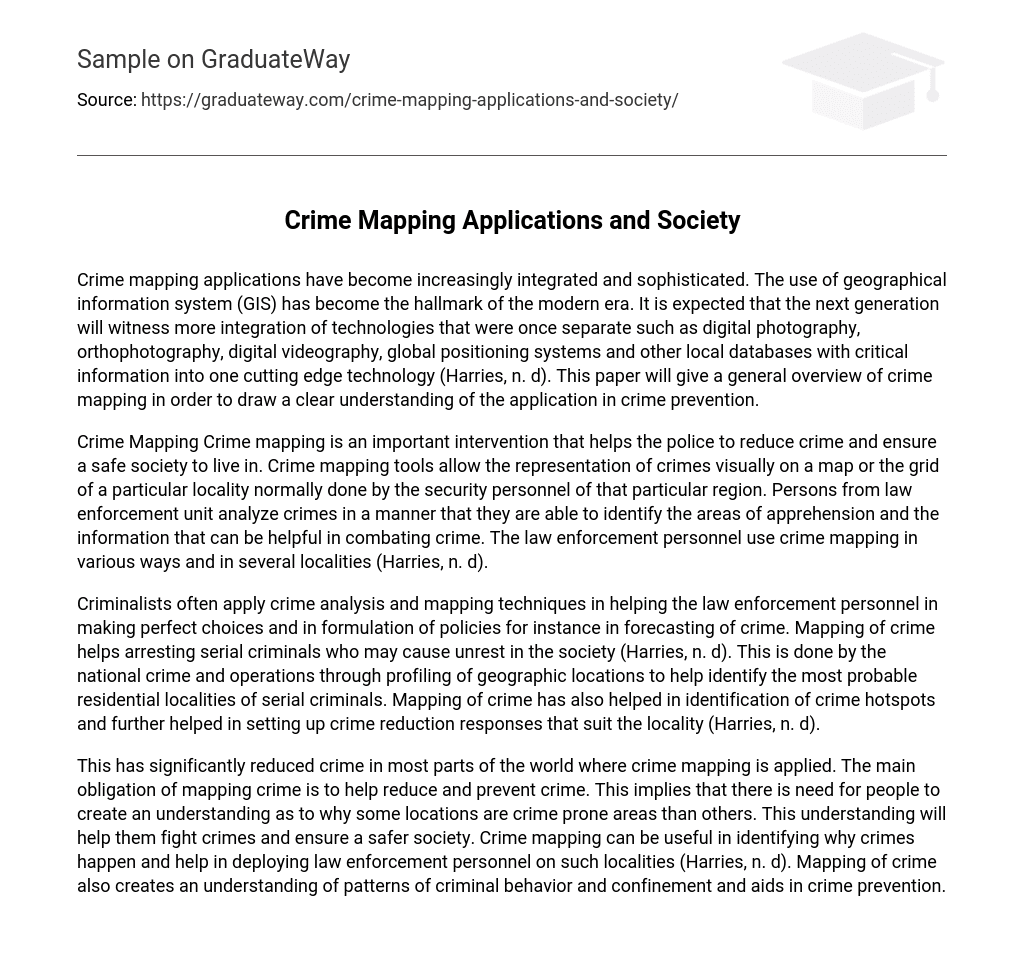Crime mapping applications have become increasingly integrated and sophisticated. The use of geographical information system (GIS) has become the hallmark of the modern era. It is expected that the next generation will witness more integration of technologies that were once separate such as digital photography, orthophotography, digital videography, global positioning systems and other local databases with critical information into one cutting edge technology (Harries, n. d). This paper will give a general overview of crime mapping in order to draw a clear understanding of the application in crime prevention.
Crime Mapping Crime mapping is an important intervention that helps the police to reduce crime and ensure a safe society to live in. Crime mapping tools allow the representation of crimes visually on a map or the grid of a particular locality normally done by the security personnel of that particular region. Persons from law enforcement unit analyze crimes in a manner that they are able to identify the areas of apprehension and the information that can be helpful in combating crime. The law enforcement personnel use crime mapping in various ways and in several localities (Harries, n. d).
Criminalists often apply crime analysis and mapping techniques in helping the law enforcement personnel in making perfect choices and in formulation of policies for instance in forecasting of crime. Mapping of crime helps arresting serial criminals who may cause unrest in the society (Harries, n. d). This is done by the national crime and operations through profiling of geographic locations to help identify the most probable residential localities of serial criminals. Mapping of crime has also helped in identification of crime hotspots and further helped in setting up crime reduction responses that suit the locality (Harries, n. d).
This has significantly reduced crime in most parts of the world where crime mapping is applied. The main obligation of mapping crime is to help reduce and prevent crime. This implies that there is need for people to create an understanding as to why some locations are crime prone areas than others. This understanding will help them fight crimes and ensure a safer society. Crime mapping can be useful in identifying why crimes happen and help in deploying law enforcement personnel on such localities (Harries, n. d). Mapping of crime also creates an understanding of patterns of criminal behavior and confinement and aids in crime prevention.





